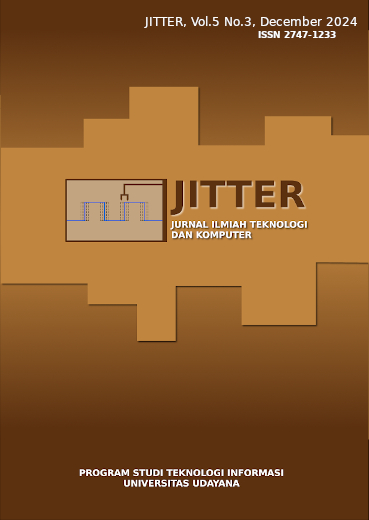Implementation of K-Means Clustering for Student Learning Outcome Analysis Using the Elbow Method at SDN 2 Tegalrejo
Abstract
Education serves as a critical effort to enhance individual skills, primarily achieved through structured learning. Ensuring equitable access to education within schools is a key approach, which can be facilitated by analyzing students' academic achievements. SD Negeri 2 Tegal Rejo, as a formal educational institution, observes significant variations in the average performance scores among its students. To address this, a grouping method is necessary to better understand and cater to the diverse learning abilities of the students. This study employs the K-Means Clustering Algorithm, a prominent technique in the fields of data analysis and data mining. Data mining involves the systematic collection and processing of data to uncover valuable insights. Specifically, this study utilizes the K-Means algorithm to categorize students based on their average scores, aiming to extract reliable and actionable information. The research methodology includes several stages: data collection, preprocessing, transformation, and clustering analysis using the K-Means algorithm, followed by evaluation through the Elbow method to identify the optimal number of clusters. The findings reveal two distinct clusters Cluster 0: Comprising 14 students with an average score of 53.8%. Cluster 1: Comprising 12 students with an average score of 46.2%. The clustering results offer a comprehensive understanding of the distribution of students' academic abilities. These insights serve as a basis for designing targeted and effective teaching strategies, contributing to improved educational outcomes and the overall quality of learning experiences
References
[2] Dayera, M. B. P., & Ohello, F. (2024). G-Tech: Jurnal Teknologi Terapan, 8(1), 186–195. https://ejournal.uniramalang.ac.id/index.php/g-tech/article/view/1823/1229.
[3] Defiyanti, S., Jajuli, M., & Rohmawati, N. (2017). Optimalisasi K-MEDOID dalam pengklasteran mahasiswa pelamar beasiswa dengan CUBIC CLUSTERING CRITERION. Jurnal Nasional Teknologi dan Sistem Informasi, 3(1), 211–218. https://doi.org/10.25077/teknosi.v3i1.2017.211-218.
[4] Jollyta, D., Siddik, M., Mawengkang, H., & Efendi, S. (n.d.). Teknik evaluasi cluster solusi menggunakan Python dan Rapidminer. Deepublish.
[5] Jollyta, D., Efendi, S., Zarlis, M., & Mawengkang, H. (2019). Optimasi cluster pada data stunting: Teknik evaluasi cluster sum of square error dan Davies Bouldin Index. Prosiding Seminar Nasional Riset Information Science (SENARIS), 1, 918–926.
[6] Farissa, R. A., Mayasari, R., & Umaidah, Y. (2021). Perbandingan algoritma K-Means dan K-Medoids untuk pengelompokkan data obat dengan silhouette coefficient di Puskesmas Karangsambung. Journal of Applied Informatics and Computing, 5(2), 109–116. https://doi.org/10.30871/jaic.v5i1.3237.
[7] Iskandar, M. S., & Fatah, Z. (2024). Implementasi metode algoritma K-Means clustering untuk menentukan penerima program Indonesia Pintar (PIP). Gudang Jurnal Multidisiplin Ilmu, 2(11), 1–8.
[8] Nabila, Z., Isnain, A. R., & Abidin, Z. (2021). Analisis data mining untuk clustering kasus Covid-19 di Provinsi Lampung dengan algoritma K-Means. Jurnal Teknologi dan Sistem Informasi (JTSI), 2(2), 100. http://jim.teknokrat.ac.id/index.php/JTSI.
[9] Khormarudin, N. A., Panjaitan, O. C. K. S., Septianingsih, A., Faisal, M., Utami, W. S., Ningsi, L. N., Tambunan, H. S., Zai, C., & Teknik Komputer. (2022). Teknik data mining: Algoritma K-Means clustering. Jurnal Lebesgue: Jurnal Ilmiah Pendidikan Matematika, Matematika dan Statistika, 1(2), 116–123. https://djournals.com/klik%0Ahttps://ilmukomputer.org/category/datamining/.
[10] Oktaviany, N., Suarna, N., & Prihartono, W. (2024). Implementasi algoritma K-Means clustering dalam mengelompokkan kepadatan penduduk di Provinsi DKI Jakarta. JATI (Jurnal Mahasiswa Teknik Informatika), 8(1), 19–126. https://doi.org/10.36040/jati.v8i1.8241.




